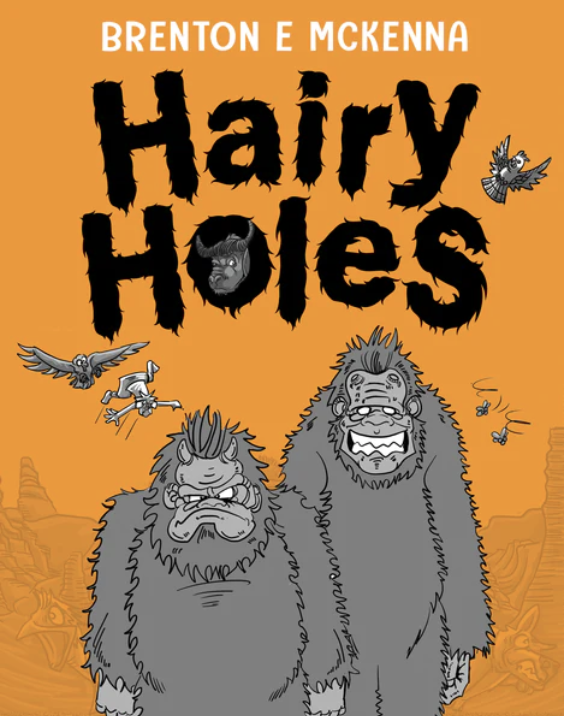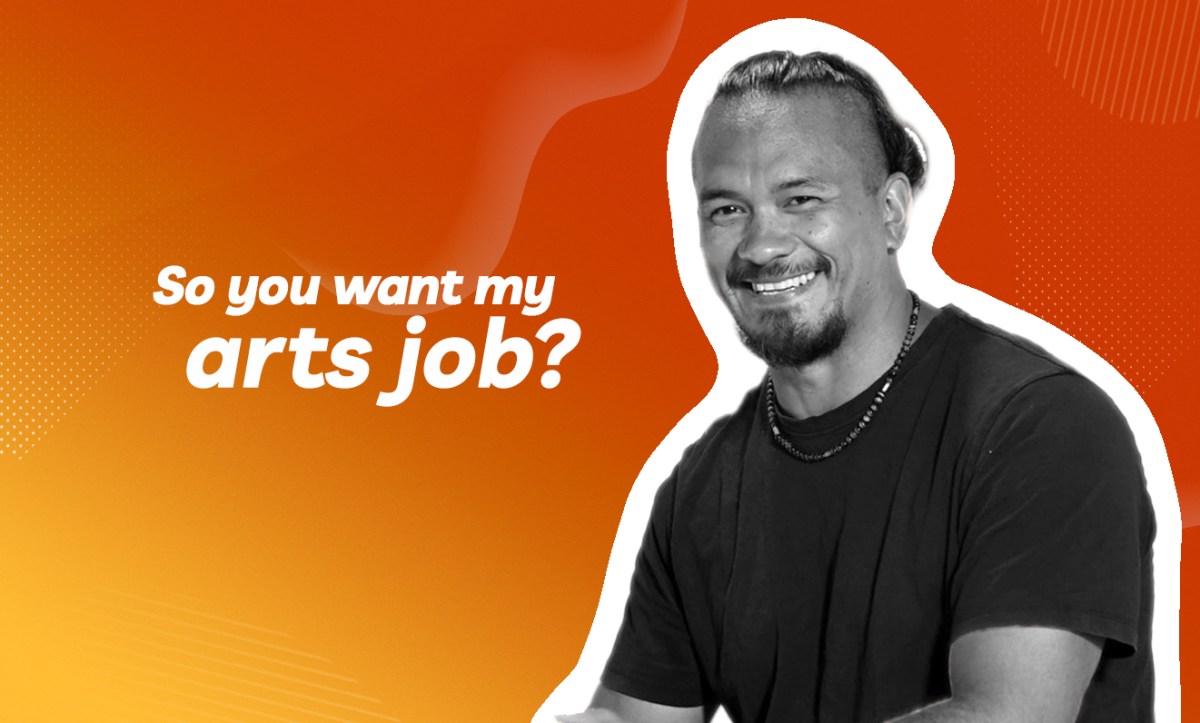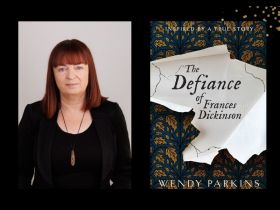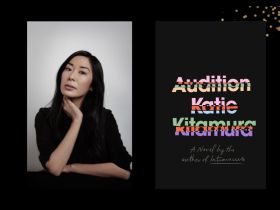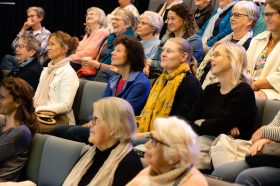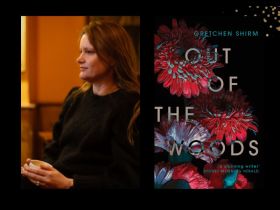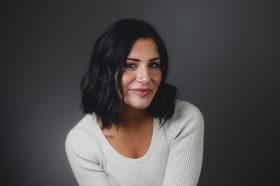Brenton McKenna is a Yawuru artist, creator and graphic novel author based in Broome, WA. He is among Australia’s first published Indigenous graphic novel authors, with his title Ubby’s Underdogs: The Legend of the Phoenix Dragon, published in 2011 by Magabala Books.
The Ubby’s brand has gone on to become an iconic three-part series, affirming McKenna’s place as an exciting voice in the Australian literary scene. McKenna also has a weekly comic strip in The West Australian called ‘Ole Champ’, and has had additional titles published by Penguin and Allen & Unwin.
His latest graphic novel, Hairy Holes (Magabala Books) was released on 1 April 2023, and is described as ‘a storytelling experience of the outback supernatural’.
When he’s not drawing, McKenna dedicates his time to educating young people through creative storytelling workshops, championing the mantra, ‘you can be anything you want’.
How would you describe what you do to a non-arts friend?
I’m a cartoonist, or comic book creator.
What qualifications do you need for this job?
There is no academic requirement needed, just the love of the craft and experience. Experience seems to separate the better comic creators.
How did you get your start in this career?
I’ve written and drawn for as long as I can remember. My first paid job was way back in 2002. I was responsible for providing 20 illustrations of a variety of pests for a pesticide safety manual. I think I was paid $400 in total, but that job became my reference point on my resumé for a long time.
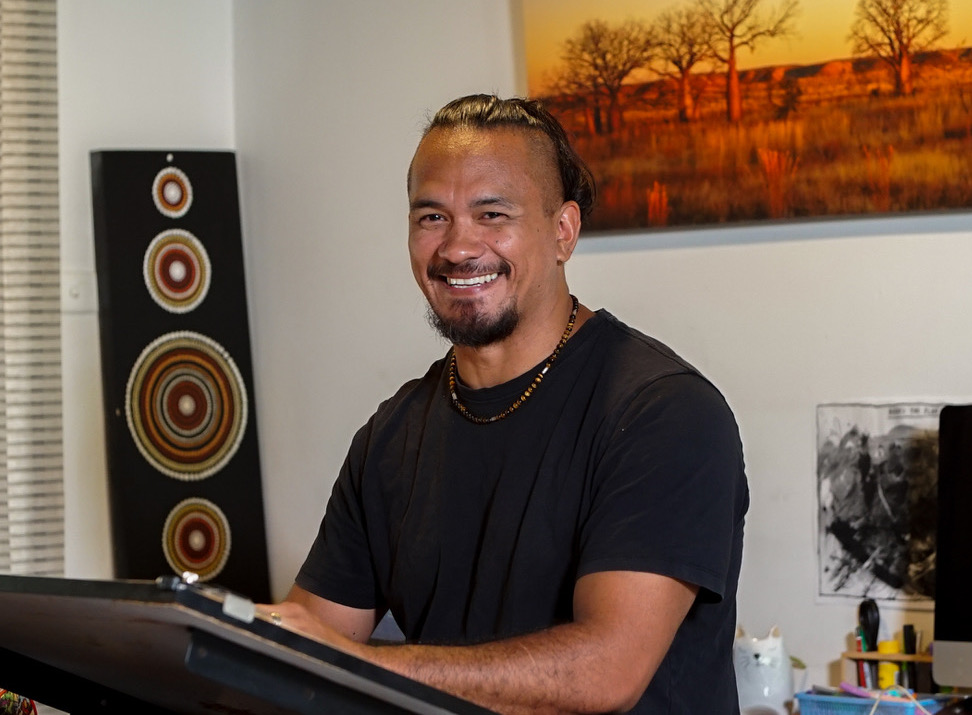
How collaborative is this job?
Comic creation is a very collaborative job as it usually comprises a writer, penciller, inker, digital colourist and designer, over which is an editor. In Australia you can get away with just a writer and cartoonist, but I like doing it all myself.
I have tried to collaborate, but you need to find someone who shares your subculture and, being the only Aboriginal person in comic creation circles, it’s been easier to work on my own.
What’s an average week like?
I used to let my work take over my life, working all hours, but as I have got older, I have realised that’s not great for the family or myself.
I work on my personal training business in the morning, kicking off at 5am, but I’m always in the studio and at my desk by 8am. I generally work through until 5.30pm each day. My routine is Monday – writing; Tuesday – pencilling; Wednesday – inking; and Thursday and Friday – designing and digital colouring. Monday is always my busiest day, and where I am at by Wednesday really dictates the end of my week.
Read: So you want my arts job – art magazine editor
I work as a cartoonist for the West Australian Monday to Friday, as well as working on my graphic novels.
What’s the most common misconception about your job?
Many people seem to believe cartooning is for kids and, because it’s fun and easy to read, that it must be fun and easy to make. That’s certainly not the case. Like any craft, there’s a process.
In terms of a wider perception about comics or graphic novels, it tends to be split into two groups, especially when it comes to the teaching fraternity. One group sees it as a creative literacy tool that offers a way to get children interested in reading. The second group remains unconvinced that it has a place in teaching children literacy because it’s fun and breaks conventions.
How competitive is this job?
In Australia there is a rising tide in the industry of comic creators, which is great. Everyone is supportive of each other and of each other’s work.
Overseas in the US, Asia and Europe it is very competitive due to the success of Marvel and DC Comics, and this will eventually translate here. Comics and their stories have always been varied, but the market is narrowing due to the success of the mainstream comics. There has been a narrowing of the archetypes, which means for those stories stepping outside the commercial norms, it will be more competitive.
In an interview for your job, what skills or qualities would you be looking for?
Writing, literacy and anything that makes you stand out in terms of your drawing. You need to showcase your creative flair and, of course, demonstrate resilience. You really need to be single-minded in your vision.
In terms of cartooning for newspapers, punctuality is key, and you need to be able to be creative under pressure to meet the daily deadlines.
What’s changing in your professional area today?
The term ‘graphic novel’ has become increasingly accepted because comic books are again popular, thanks to the blockbuster success of the Marvel and DC Comics.
What’s the weirdest thing that’s happened to you in this job?
When I was creating book two of Ubby’s Underdog, I was burning the midnight oil and had to colour a page to meet a deadline. I remember saying to myself, ‘Don’t fall asleep, you need to finish this.’ Well, I did fall asleep, but woke up at 2am to see the page had been finished. I have absolutely no recollection of doing it, but it was complete!
What about gender balance in your industry?
Cartooning has traditionally been dominated by middle-aged white men, but that’s changing. I am the first Indigenous cartoonist here in Australia and one of the best graphic novelists now is an American woman, Raina Telgemeier. The industry here in Australia is very welcoming to creators, regardless of gender or ethnicity.
Note: This article was amended to reflect that McKenna is among a number of Indigenous creators leading the way in the graphic novel genre, including Gayle Kennedy, whose experience in the space goes back to the mid 1990s when was Indigenous Issues Editor/Writer for Streetwize Comics.
